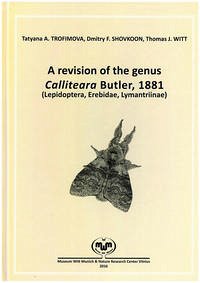The genus Calliteara Butler, 1881 contains small to medium-sized Lymantriinae moths, which as part of the tribe Orgyiini previously included 70 species and subspecies distributed in the Palaearctic, Oriental, Australian and Oceania regions. This revision inventories all species related to the genus Calliteara within this distribution and clarifies the systematic position of all previously described taxa. The number of species of the genus is now increased to 116 taxa possessing the typical general forewing pattern, the presence of a modified male eighth tergum and a unique male valva structure. Following J. D. Holloway (1982, 1999), the current volume adds three distinct morphological species groups to the previously known seven groups on the basis of adult external characters and male genitalia characters. Most Calliteara species possess characteristically similar forewing patterns and less distinguishable male genitalia. Extreme individual and geographical variability complicates the study which requires analysis of many morphological characters supplemented by DNA analysis of numerous specimens from different geographical localities. The distribution of most known species was poorly known due various taxonomical disagreements from papers devoted to various faunistic surveys. Futhermore, Calliteara moths are characterized by strong sexual dimorphism where females are significantly larger and have distinctly different wing patterns. Inter-specific differences of females are peculiar, while significant external intra-specific and geographical variability exists; therefore, DNA analysis is recommended to clarify their clear specific attribution. The present work revises the Calliteara on the basis of adult morphological study of available faunistic material reflecting specific diversity and refined geographical data consistent with a careful analysis of morphological variability.
